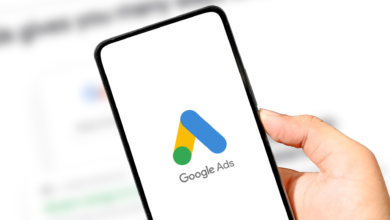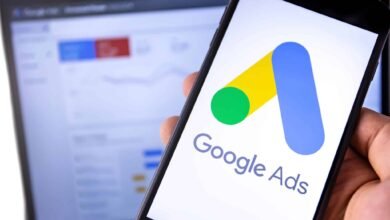Google Ads: 25 Years Later – Better or Worse?

▼ Summary
– Google Ads launched 25 years ago as Google AdWords and has evolved into a major digital marketing platform with significant changes in format and technology.
– Early Google Ads offered simplicity, full advertiser control, and transparent metrics but required manual management and had limited scale and features.
– Today’s Google Ads uses AI and automation for bidding, targeting, and creative generation, enabling cross-channel campaigns and efficiency at the cost of some granular control.
– Key milestones include the introduction of Quality Score, remarketing, Google Shopping’s paid model, Enhanced Campaigns, and the recent AI-powered Performance Max.
– Whether Google Ads was better in the past or present depends on advertiser priorities, with early versions favoring control and transparency and modern versions excelling in scale and automation.
Twenty-five years after its debut, Google’s advertising platform has fundamentally reshaped the digital marketing world. What began as a straightforward keyword bidding system has grown into a sophisticated, AI-driven ecosystem spanning search, display, video, and shopping networks. The evolution from Google AdWords to Google Ads represents one of the most significant transformations in online advertising history, raising important questions about whether the platform’s advancements have truly improved the experience for marketers.
In the early 2000s, advertisers encountered a simple, intuitive interface centered on keywords and manual bids. The platform’s progression closely mirrored shifts in consumer technology and behavior. Several pivotal developments mark this journey.
The official launch occurred in October 2000 with roughly 350 initial advertisers. The system enabled self-service text ads on search results, operating on a cost-per-click model.
A major shift happened in 2002 when the platform fully embraced the pay-per-click model. This established the performance-based accountability that digital marketers now consider standard.
Google’s 2005 acquisition of Urchin Software led to the launch of Google Analytics, providing unprecedented visibility into campaign performance and user website behavior. Conversion tracking soon followed, creating a direct link between ad clicks and measurable business outcomes.
Later that same year, Google introduced Quality Score and quality-based minimum bids. This changed the auction dynamics by making ad eligibility dependent on keyword relevance and performance rather than just the bid amount. By December, landing page quality became part of the algorithm.
The 2010 introduction of remarketing allowed advertisers to re-engage users who had previously visited their websites. This marked Google’s entry into behavioral targeting, which would later form the foundation of the Display Network.
May 2012 brought the announcement that Google Product Search would transition to Google Shopping, moving from free listings to a paid model using Product Listing Ads. Completed in the U.S. by October, this change aimed to enhance product data quality and merchant participation.
The 2013 launch of Enhanced Campaigns consolidated targeting across desktop, mobile, and tablet devices into a single management structure. This simplification allowed for bid adjustments based on device type, location, and time of day.
A significant rebranding occurred in 2018 when Google retired the AdWords name in favor of “Google Ads,” reflecting a unified platform for Search, Display, YouTube, Shopping, and app campaigns. Smart Campaigns also debuted, designed to help small businesses leverage automation.
November 2021 saw the introduction of Performance Max, an AI-powered campaign type that reaches audiences across all Google properties from a single goal-based campaign. This represented a major step toward comprehensive automation and multi-channel integration.
From 2023 through 2025, Google integrated Gemini-powered tools for creative generation and conversational campaign setup. These arrived alongside enhanced transparency features within Performance Max, giving advertisers asset-level insights and expanded brand controls.
The early Google Ads environment offered distinct advantages that many veteran marketers still recall fondly. Complete control over campaigns stood as its defining characteristic. Advertisers selected their keywords, manually set bids, and observed immediate cause-and-effect relationships. Every performance metric remained transparent, when results changed, the reason was typically clear and traceable.
The learning curve proved more manageable during this period. Smaller businesses could effectively compete with modest budgets and basic keyword matching knowledge. Many early adopters built successful enterprises using little more than bid spreadsheets and straightforward ad copy. Optimization resembled a hands-on craft rather than a machine-learning process.
Advertising costs remained lower with less competition. Small enterprises could afford experimentation without being immediately outbid by large corporations or sophisticated automated strategies.
This simplicity came with significant limitations. Campaign management demanded considerable time investment through manual bid adjustments and constant monitoring. Cross-device attribution didn’t exist formally until 2016, remarketing arrived only in 2010, and scaling beyond several thousand keywords required substantial effort. Reporting capabilities were restricted, offering only surface-level performance insights.
The contemporary Google Ads platform operates on entirely different principles. Campaigns now revolve around audiences, signals, and outcomes rather than individual keywords or devices. Machine learning drives real-time bidding, creative optimization, and placement decisions by analyzing millions of data points every second.
Modern advertisers have access to tools that were previously unimaginable. Smart Bidding strategies like Maximize Conversion Value and Target ROAS utilize historical and contextual signals to automatically optimize bids. Performance Max and Demand Gen campaigns reach users across Search, YouTube, Display, Discover, and Maps without requiring manual audience segmentation.
Creative development has undergone similar transformation. Gemini-powered AI features can generate ad copy, images, and videos aligned with brand identity and performance objectives. This automation reduces time spent on repetitive tasks, freeing marketers to focus on strategy, messaging, and measurement.
Data integration has reached unprecedented levels through Google Analytics 4, enhanced conversions, and first-party data connections. Advertisers can now measure and optimize complex customer journeys while maintaining compliance with evolving privacy standards.
The trade-off for these advancements involves control. As automation expands, transparency into individual performance levers diminishes. Marketers can’t always identify which specific keyword, audience segment, or ad placement drove a particular conversion. While some find this loss of granularity frustrating, many others consider the efficiency and predictive power of automation well worth the compromise.
Modern measurement operates within stricter privacy frameworks. With the decline of third-party cookies and increasing restrictions on user-level tracking, Google Ads increasingly relies on modeled conversions and consented first-party data to maintain accuracy. This evolution has transformed the required skillset from purely tactical management to data stewardship and strategic planning.
Google’s ongoing response to advertiser feedback demonstrates its commitment to balancing automation with transparency. Performance Max, initially criticized for limited reporting detail, now provides asset-level performance metrics and improved search term visibility. The platform has incorporated account-level negative keywords and brand exclusion controls, addressing long-standing requests for greater oversight.
These improvements reflect broader industry changes. Privacy regulations like GDPR and the phase-out of third-party cookies compel advertising platforms to reconsider their approach to data transparency. Advertisers demand clearer insight into how machine-learning models utilize their information, while consumers insist on stronger privacy protections.
Google’s movement toward more transparent reporting, automated creative controls, and first-party data integration responds to both market pressures and advertiser input. The company recognizes that trust has become a competitive advantage. When agencies and marketing teams can confidently explain how automation reaches its decisions, they’re more likely to increase their investment across Google’s advertising ecosystem.
The introduction of conversational campaign setup, where marketers describe objectives and creative concepts in natural language, represents another response to user feedback. This approach makes campaign creation less intimidating for small businesses while preserving human judgment in the process.
Google consistently reinforces the importance of human decision-making alongside technological advancement. The platform’s official communications emphasize that AI exists to support advertisers, highlighting collaboration between human creativity and automated systems rather than replacement. This acknowledgment suggests that despite deepening automation, Google understands advertisers’ need to maintain control and comprehend the system’s operations.
Determining whether Google Ads was superior in its early years or represents an improvement today ultimately depends on what individual advertisers value most. Those who prioritize simplicity, transparency, and comprehensive control likely found the original AdWords platform unmatched. Campaigns required manual management but offered predictability, every component remained visible, and every click could be traced to a specific advertiser decision.
Marketers who value scale, efficiency, and advanced targeting capabilities undoubtedly find today’s Google Ads superior. The ability to reach audiences across multiple channels, powered by real-time automation and predictive data analytics, has dramatically expanded what’s achievable in digital marketing.
What remains consistent across both eras is Google’s commitment to evolving alongside its advertising partners. Each major platform shift has sought to improve relevance, performance, and user experience. While not every change has received universal approval, the underlying intention to balance automation with advertiser trust has remained steady.
After a quarter-century, Google Ads continues to establish the standard for paid media. The platform’s appearance and mechanics have transformed dramatically, but its core purpose persists: helping businesses connect with people in meaningful, measurable ways. Whether this represents an improvement depends less on the tool itself and more on how marketers choose to utilize and adapt to its evolving technology.
(Source: Search Engine Journal)



